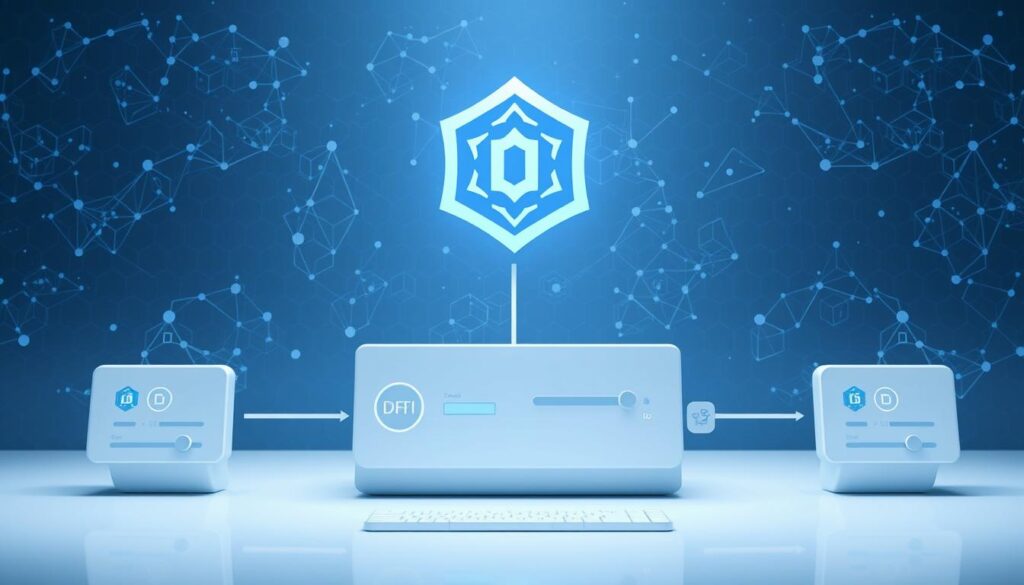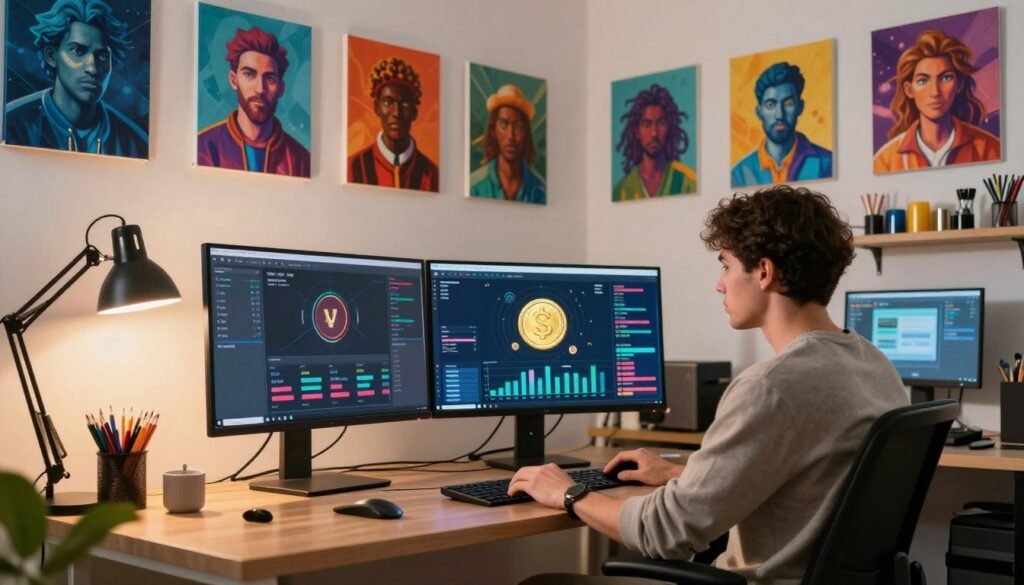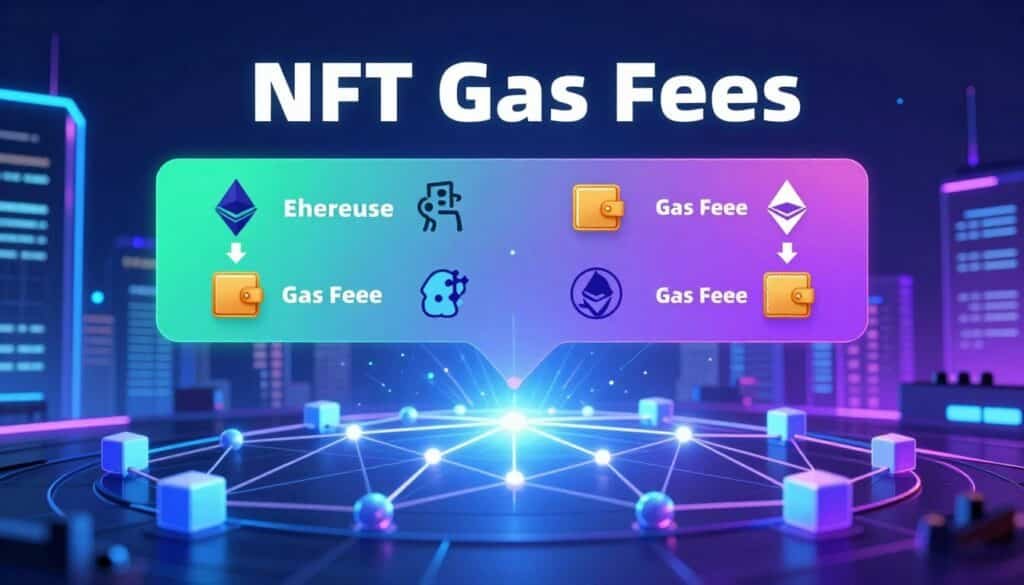Now Reading: How to use NFTs as collateral for DeFi lending and borrowing protocols
- 01
How to use NFTs as collateral for DeFi lending and borrowing protocols
How to use NFTs as collateral for DeFi lending and borrowing protocols

Digital collectibles are transforming finance through groundbreaking collateralization methods. Unique blockchain-based assets now enable holders to access liquidity while retaining ownership – a concept reshaping decentralized markets. This emerging approach addresses a critical challenge: converting rare digital items into usable capital without forced sales.
The nonfungible nature of these assets creates unique opportunities and hurdles. Unlike traditional cryptocurrencies, each unit holds distinct characteristics that complicate standard financial applications. Specialized platforms now bridge this gap through innovative valuation models and loan structures.
Market growth reflects surging demand for alternative liquidity solutions. Recent platform launches demonstrate increasing institutional interest in digital asset financing. Collectors gain flexibility through short-term capital access, while lenders earn yields from previously untapped markets.
This financial evolution introduces new considerations for participants. Asset valuation methods, loan-to-value ratios, and liquidation processes differ significantly from conventional crypto lending. Understanding these distinctions becomes crucial for navigating opportunities in this expanding sector.
Key Takeaways
- Digital collectibles enable liquidity access without permanent asset sales
- Unique identification features require specialized valuation approaches
- Lending platforms have grown 400% year-over-year in transaction volume
- Collateral management differs from traditional crypto lending models
- Risk assessment includes market volatility and asset uniqueness factors
Understanding the Role of NFTs in Decentralized Finance
Blockchain technology continues expanding financial possibilities through unique digital ownership models. Unlike traditional non-fungible tokens, these assets carry distinct identifiers that prevent duplication. This uniqueness creates new opportunities for wealth storage and value transfer in digital ecosystems.
Defining NFTs and Their Unique Attributes
Digital certificates of ownership now span multiple categories through blockchain verification. Popular types include:
- Artwork from virtual galleries
- Virtual land parcels in metaverse platforms
- Rare in-game equipment
- Tokenized physical property deeds
Each asset’s metadata contains permanent records of origin and transaction history. This transparency helps establish trust between buyers, sellers, and lenders.
The Emergence of NFT Collateral in Modern Finance
Marketplaces now recognize high-value collections as potential capital sources. Platforms analyze historical sales data and community demand to determine loan amounts. Specialized algorithms assess rarity traits and ownership duration when calculating asset worth.
Owners benefit from immediate liquidity while maintaining possession of prized digital items. Lenders gain exposure to alternative markets through secured agreements. This symbiotic relationship drives innovation in valuation techniques and risk management strategies.
How to use NFTs as collateral for DeFi lending and borrowing protocols
Owners of rare blockchain items now access instant liquidity through specialized platforms. This process converts static collections into active financial tools while maintaining ownership rights. Two distinct models dominate the space, each offering unique advantages for different needs.

Step-by-Step Process for Collateralization
- Connect a digital wallet to a verified lending platform supporting collectibles
- Select assets from your collection for valuation using integrated appraisal tools
- Review loan offers based on asset rarity, market demand, and historical sales data
- Finalize agreement terms through multi-signature smart contract execution
Platforms typically require identity verification through wallet signatures rather than personal documents. Funds usually appear in accounts within minutes after contract activation.
Marketplace Models Compared
Peer-to-peer systems enable direct negotiations between parties. Borrowers set desired loan terms while lenders bid on opportunities. Custom agreements often feature flexible repayment schedules.
- Protocol-based systems use algorithmic pricing from liquidity pools
- Automated smart contracts handle collateral management
- Standardized interest rates adjust based on market conditions
The table below highlights key operational differences:
| Feature | Peer-to-Peer | Protocol-Based |
|---|---|---|
| Funding Source | Individual lenders | Liquidity pools |
| Approval Time | 24-72 hours | Instant |
| Rate Control | Negotiable | Algorithm-driven |
Both models require understanding smart contract obligations before committing assets. Default conditions vary significantly between platforms.
Benefits and Risks of NFT-Backed Loans
Digital asset holders face a critical choice: sell prized collections or leverage them for liquidity. NFT-backed loans create a third path, letting owners tap into asset value while keeping future upside. This financial tool reshapes wealth management strategies for collectors and investors alike.

Unlocking Liquidity Without Selling Valuable Assets
Immediate capital access stands as the primary advantage. Borrowers avoid taxable events triggered by direct sales. Long-term holders particularly benefit from this structure, maintaining ownership during market upswings.
Interest rates often undercut traditional bank loans. Decentralized platforms eliminate credit checks through collateral-first models. Transactions settle faster than conventional financing – sometimes within minutes.
| Advantage | Risk | Management Strategy |
|---|---|---|
| Tax deferral | Value drops | Set conservative LTV ratios |
| 24/7 access | Contract flaws | Audit platform security |
| Global markets | Regulatory shifts | Diversify collateral types |
Market volatility remains the chief concern. A 40% price swing could trigger automatic liquidations. Savvy borrowers maintain buffer cushions above minimum collateral requirements.
Smart contract risks demand careful platform selection. Reputable services undergo third-party code audits. Regulatory uncertainty looms largest for cross-border transactions, with compliance rules varying by jurisdiction.
Navigating Smart Contracts & Lending Platforms
Automated agreements reshape trust in digital asset transactions. Blockchain-based lending solutions remove human error through code-driven execution. This shift creates transparent financial relationships between strangers worldwide.
Role of Smart Contracts in Securing Loans
Self-executing smart contracts act as digital escrow agents. These programs hold collateral until borrowers fulfill repayment terms. Loan details like interest rates and deadlines become unchangeable code rules.

Platform Features: Valuation Tools and Escrow Mechanisms
Leading services combine price estimators with secure storage protocols. NFTfi uses peer reviews to assess rare digital art values. Arcade’s vault system lets users borrow against multiple assets simultaneously.
| Platform | Fee Structure | Supported Assets | Unique Feature |
|---|---|---|---|
| NFTfi | 0% borrower / 5% lender | ERC-721 | Custom offers |
| Arcade | 2% origination | Multi-collection | Portfolio loans |
| Aavegotchi | 0.3% platform | Game NFTs | Collateral staking |
Ensuring Security and Transparency in DeFi Lending
Reputable platforms publish third-party audit reports publicly. Users should verify contract addresses match official documentation. Community forums often reveal unresolved disputes or system weaknesses.
Two-factor authentication protects accounts from unauthorized access. Transaction histories remain visible on-chain for permanent verification. Regular software updates patch potential vulnerabilities in lending protocols.
Unlocking Additional Value Through NFT Fractionalization and Rentals
Fractional ownership models are revolutionizing digital asset utilization. By dividing high-value items into tradeable shares, collectors unlock new liquidity streams while retaining partial ownership. This approach broadens market participation and creates hybrid financial strategies.

How Fractionalization Expands Investor Access
Smart contracts split single assets into multiple ERC-20 tokens. Each token represents proportional ownership rights. This process enables collective investment in premium collections like CryptoPunks through micro-transactions.
Owners benefit through dual liquidity channels. Partial sales generate immediate funds, while remaining shares secure loans. Platforms like NFTFi enable layered strategies combining fractionalization and lending.
| Strategy | Liquidity Source | Ownership Retention | Best For |
|---|---|---|---|
| Full Collateral | 100% asset value | 0% during loan | Short-term needs |
| Fractional Sale | Partial value | Remaining shares | Diversification |
| Hybrid Approach | Sale + loan | 50-80% | Maximizing capital |
Rental markets offer alternative revenue streams. Gaming ecosystems lead this trend, letting users lease in-game items temporarily. Original owners earn fees while maintaining long-term asset control.
Three key considerations shape these strategies:
- Platform security audits for smart contracts
- Market depth for fractional token trading
- Clear royalty structures in rental agreements
Combined approaches let collectors balance immediate needs with future upside. As markets mature, these tools will likely become standard in digital asset management.
Strategies for Maximizing Returns with NFT Collateral
Active collectors now employ sophisticated techniques to optimize digital asset utilization. Market conditions and platform features create opportunities for strategic financial planning. Savvy participants balance risk exposure with potential rewards through calculated approaches.
Leveraging NFT Value in a Volatile Market
Timing collateralization requires monitoring floor price trends and collection momentum. Borrowers secure better loan terms during market upswings when asset values stabilize. Diversifying collateral across multiple collections reduces exposure to single-project volatility.
Platform algorithms favor assets with consistent trading volume. Maintaining active bids on secondary markets strengthens valuation arguments. Some lenders offer preferential rates for blue-chip NFTs with proven historical performance.
Customizing Loan Terms to Fit Investment Goals
Peer-to-peer models enable direct rate negotiations between experienced parties. Seasoned borrowers often secure lower interest by offering premium collateral. Fixed-term agreements work best for planned expenditures, while revolving credit suits ongoing strategies.
Protocol-based systems provide speed for time-sensitive opportunities. Automated loan approvals let users capitalize on sudden market movements. Hybrid approaches combine quick liquidity access with personalized refinancing options through secondary platforms.
Successful strategies align collateral use with broader financial objectives. Whether funding new acquisitions or bridging cash flow gaps, NFT-backed solutions offer flexibility traditional systems can’t match.















